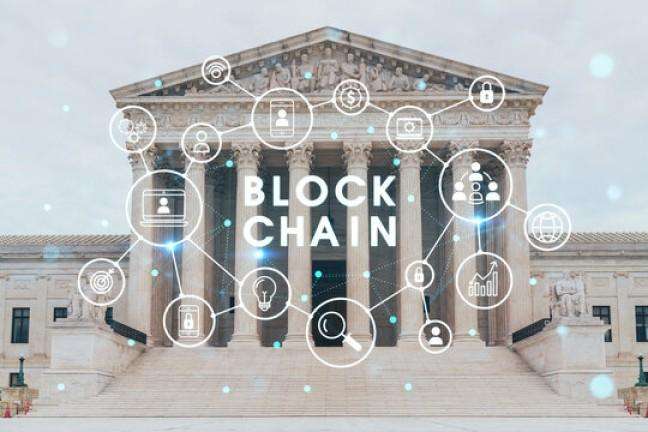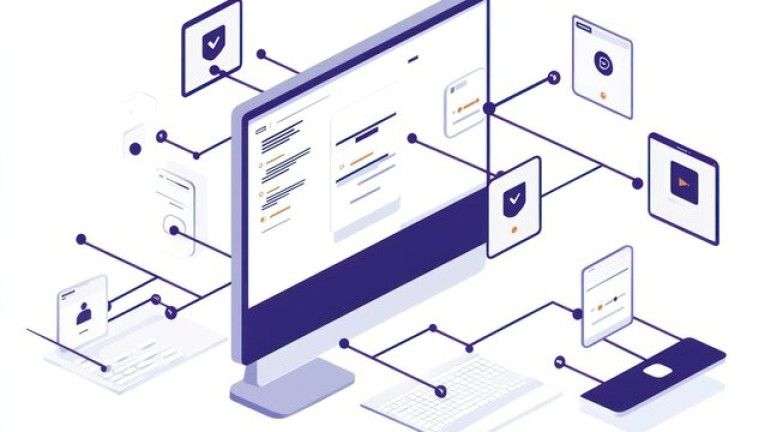As an investor exploring the rapidly evolving world of technology, I often find myself delving deep into various fields such as artificial intelligence (AI), blockchain, and cloud data. Among these, a term that frequently pops up is “ABCD” (Artificial Intelligence, Blockchain, Cloud, and Data), which encompasses four pivotal components driving innovation in the modern tech landscape. This article will walk you through these technologies, their interconnections, and how they are reshaping industries, providing insights that can influence investment strategies.
Table of Contents
What is AB, CD?
AB, CD refers to the combination of four transformative technologies: Artificial Intelligence (AI), Blockchain, Cloud Computing, and Data Analytics. Each of these elements plays a distinct role in modern technological advancements, but they are more effective when integrated into a single cohesive framework. Understanding each of these technologies individually is important before examining their combined potential.
Artificial Intelligence (AI)
AI refers to the capability of a machine to imitate intelligent human behavior. It is the foundation for technologies like machine learning, deep learning, and natural language processing. AI has applications in a wide range of sectors, including healthcare, finance, automotive, and entertainment. For example, AI can be used to detect fraud in financial transactions, automate manufacturing processes, or recommend content to users on streaming platforms.
Example of AI in Action: AI-driven recommendation engines power services like Netflix and Amazon. By analyzing user data, these systems predict and suggest movies or products a user is most likely to enjoy, thereby enhancing user experience and increasing sales or engagement.
Blockchain
Blockchain technology is a decentralized, distributed ledger system that records transactions across multiple computers. It ensures that records cannot be altered retroactively without changing all subsequent blocks, which increases security and transparency. Blockchain is most famously used in cryptocurrency, but its use cases extend far beyond that, including supply chain management, voting systems, and digital identity verification.
Example of Blockchain in Action: In supply chain management, blockchain can track the journey of a product from manufacture to delivery. This ensures transparency, as every participant in the supply chain can verify the product’s status and origin.
Cloud Computing
Cloud computing allows businesses and individuals to store and access data and programs over the internet rather than on local servers or personal devices. This approach has revolutionized the way companies handle their IT infrastructure. Instead of investing heavily in hardware, companies can use cloud services like Amazon Web Services (AWS), Microsoft Azure, or Google Cloud to scale their operations without upfront costs.
Example of Cloud Computing in Action: Startups often leverage cloud computing to quickly scale their operations without the financial burden of purchasing and maintaining expensive servers. By hosting their applications on the cloud, they can easily add or reduce resources depending on demand.
Data Analytics
Data analytics involves examining data to draw conclusions about the information it contains. This field utilizes various statistical tools and techniques to extract insights from both structured and unstructured data. The ability to analyze large sets of data has become crucial for businesses seeking to make informed decisions and maintain a competitive edge.
Example of Data Analytics in Action: Retail companies use data analytics to understand customer preferences and buying behavior. By analyzing purchasing patterns, they can stock their stores with items most likely to sell and tailor their marketing campaigns to specific customer segments.
The Intersection of AB, CD: How AI, Blockchain, Cloud, and Data Analytics Work Together
At first glance, AI, blockchain, cloud computing, and data analytics may appear to be separate entities, each serving its own purpose. However, these technologies are highly complementary, and when combined, they create a powerful synergy. Let’s explore how they work together and unlock new opportunities.
AI + Blockchain: Enhancing Trust and Decision-Making
AI can analyze large volumes of data quickly and accurately, while blockchain ensures that the data is trustworthy and immutable. For instance, AI can be used to identify trends in financial data, while blockchain ensures that the financial records are secure and tamper-proof. This combination can significantly reduce fraud in sectors like banking and insurance.
Example: In a decentralized financial system (DeFi), AI could analyze market trends and provide investment advice, while blockchain ensures that all transactions are transparent and secure, preventing fraud and increasing trust in the system.
AI + Cloud: Scaling Intelligence
AI models require vast amounts of data and computational power to function efficiently. Cloud computing provides the infrastructure needed to scale AI applications. With the cloud, businesses can access the resources they need without investing in expensive hardware. This combination allows businesses to deploy AI models faster and more cost-effectively.
Example: A tech company developing a facial recognition AI system could use cloud services to process and store the massive datasets required for training. By doing so, they can easily scale their computing power without worrying about maintaining physical infrastructure.
Blockchain + Cloud: Decentralization and Flexibility
Cloud computing provides flexibility in storing and accessing data, while blockchain ensures data integrity. Combining the two offers a decentralized approach to data storage. This is especially useful in industries like healthcare, where sensitive data must be securely stored and accessed across multiple locations.
Example: In a healthcare setting, patient records can be stored on the cloud, with blockchain providing a secure and tamper-proof ledger of who accessed the records and when. This ensures both accessibility and security, crucial for patient privacy.
Data Analytics + Blockchain: Transparent Insights
Data analytics often relies on clean, reliable data. Blockchain ensures that the data being analyzed is accurate and has not been altered. This is particularly important in sectors like supply chain management or healthcare, where transparency is critical.
Example: A logistics company could use blockchain to track the journey of goods, ensuring data integrity at every step. Data analytics can then be used to analyze this data and optimize delivery routes or predict delays, improving operational efficiency.
Data Analytics + AI: Intelligent Insights
AI algorithms can process large volumes of data quickly, making it easier to extract valuable insights. By integrating AI with data analytics, businesses can gain deeper insights and make data-driven decisions faster. For example, AI-powered data analytics can help identify customer preferences, optimize marketing campaigns, and even predict future trends.
Example: Retailers use AI-powered data analytics to personalize shopping experiences for customers. By analyzing past purchase data, AI can predict what a customer might want to buy next, and data analytics helps optimize inventory management based on these predictions.
Real-World Applications of AB, CD Technologies
These technologies are not just theoretical concepts—they are actively reshaping industries and creating new opportunities for businesses and investors alike. Below are a few industries that are benefiting from the intersection of AI, blockchain, cloud computing, and data analytics.
Healthcare
The healthcare industry is leveraging these technologies to improve patient outcomes, reduce costs, and enhance operational efficiency. AI is used to analyze medical images, while blockchain ensures secure patient data management. Cloud computing provides the infrastructure for storing large medical datasets, and data analytics is used to identify patterns that can improve treatment protocols.
Finance
In the financial sector, AI is used to detect fraudulent transactions, while blockchain provides secure and transparent transaction records. Cloud computing allows for real-time data processing, and data analytics helps financial institutions make better investment decisions by analyzing market trends.
Supply Chain Management
Supply chains rely heavily on data, and integrating blockchain and AI with data analytics helps optimize logistics and prevent fraud. Blockchain ensures transparency, AI predicts demand, and data analytics is used to improve efficiency and reduce costs.
The Future of AB, CD Technologies
As these technologies continue to evolve, their potential applications are virtually limitless. In the future, we can expect even more seamless integration of AI, blockchain, cloud, and data analytics. For investors, this presents a vast array of opportunities. Companies that successfully integrate these technologies will likely lead the charge in innovation, creating value not just for themselves but also for their stakeholders.
Investment Opportunities in AB, CD
If you’re considering investing in these technologies, it’s important to look for companies that are already making strides in AI, blockchain, cloud computing, and data analytics. Tech giants like Microsoft, Amazon, and IBM are already investing heavily in these areas, but there are also many startups that are developing innovative solutions.
Example of Investment Strategy: If I were to invest in AI, I would focus on companies that are working on natural language processing or machine learning models for healthcare or finance. In blockchain, I’d look at companies focusing on decentralized finance or secure data storage solutions. Cloud computing investments would go toward companies that provide scalable infrastructure, while data analytics would require investments in companies offering advanced analytics platforms.
Conclusion
AB, CD technologies—AI, Blockchain, Cloud Computing, and Data Analytics—are at the forefront of the next wave of technological innovation. Understanding how these technologies work together will help businesses harness their full potential, and for investors, recognizing the companies that are leading the charge will offer substantial opportunities for growth. As we move further into the digital age, it’s clear that the combination of these technologies will play a pivotal role in shaping the future of industries across the globe.





